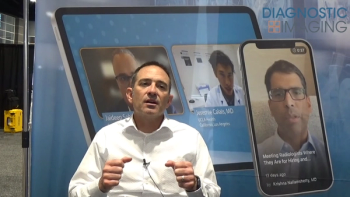Emerging research suggests that artificial intelligence (AI) may significantly reduce the interval breast cancer rate of screening digital breast tomosynthesis (DBT) exams.
For the retrospective study, recently published in Radiology, researchers evaluated the use of AI software (Insight DBT, version 1.1.0.0, Lunit) in screening DBT for 224 women (mean age of 61) with interval breast cancer.
The study authors found that the AI software provided accurate localization for 32.6 percent of the interval cancer cases.
“Our study shows that the interval cancer rate could be reduced by nearly one-third with the use of AI at screening DBT examinations,” wrote lead study author Manisha Bahl, M.D., an associate professor of radiology at Harvard Medical School, and colleagues.
In the AI-detected cases, the researchers noted that interval cancers were 15 mm larger than cancers not detected with AI (37 mm vs. 22 mm) and there was over an 18 percent higher prevalence of axillary lymph node positivity (41.3 percent vs. 22.8 percent).
Three Key Takeaways
- AI may substantially reduce interval cancer rates. The use of AI in digital breast tomosynthesis (DBT) screening could potentially reduce interval breast cancer rates by nearly one-third, improving early detection of cancers that may otherwise be missed.
- AI detects larger and potentially more aggressive cancers. Interval cancers identified by AI were significantly larger (37 mm vs. 22 mm) and more likely to have axillary lymph node involvement (41.3 percent vs. 22.8 percent), indicating that AI may preferentially detect fast-growing or more aggressive tumors.
- Improved diagnostic accuracy. The AI software showed high diagnostic performance — accurately identifying 86 percent of true-negative DBT cases and correctly reclassifying 73 percent of false positives — suggesting its potential to enhance screening accuracy and reduce unnecessary follow-up.
“(These findings lend) support to the conclusion that use of AI could directly lead to improved screening DBT outcomes and a reduction in breast cancer–related mortality or morbidity. These results suggest that AI preferentially detects more aggressive or fast-growing cancers and/or that AI detects cancers missed by the radiologist that were large and possibly metastatic even at the time of presentation on screening DBT,” emphasized Bahl and colleagues.
In addition to 86 percent accuracy in identifying true-negative cases on DBT, the study authors pointed out that the AI software correctly categorized 73 percent of false-positive assessments as negative.
(Editor’s note: For related content, see “What New Research Reveals About the Impact of AI and DBT Screening: An Interview with Manisha Bahl, MD,” “Mammography Surveillance: Can Screening DBT Have an Impact After Breast Cancer Treatment?” and “Expanded Breast Cancer Screening in Missouri Led to 45 Percent Higher Likelihood of Mammography Screening for Women on Medicaid.”)
In regard to study limitations, the researchers acknowledged possible differences with interval cancer detection rates due to variations in radiologist experience, supplemental imaging use and breast cancer screening intervals. The study authors also noted the possibility of incorrect exam categorization in their reporting system if patients had subsequent imaging and/or biopsy at another facility.





























